Once Upon a Time
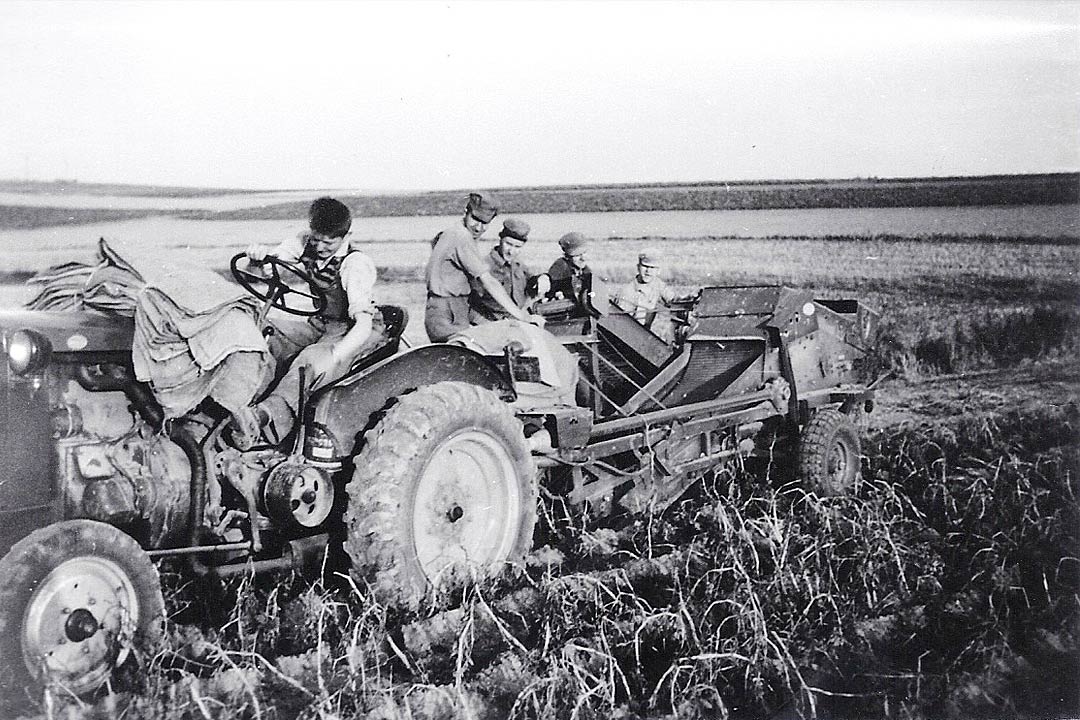

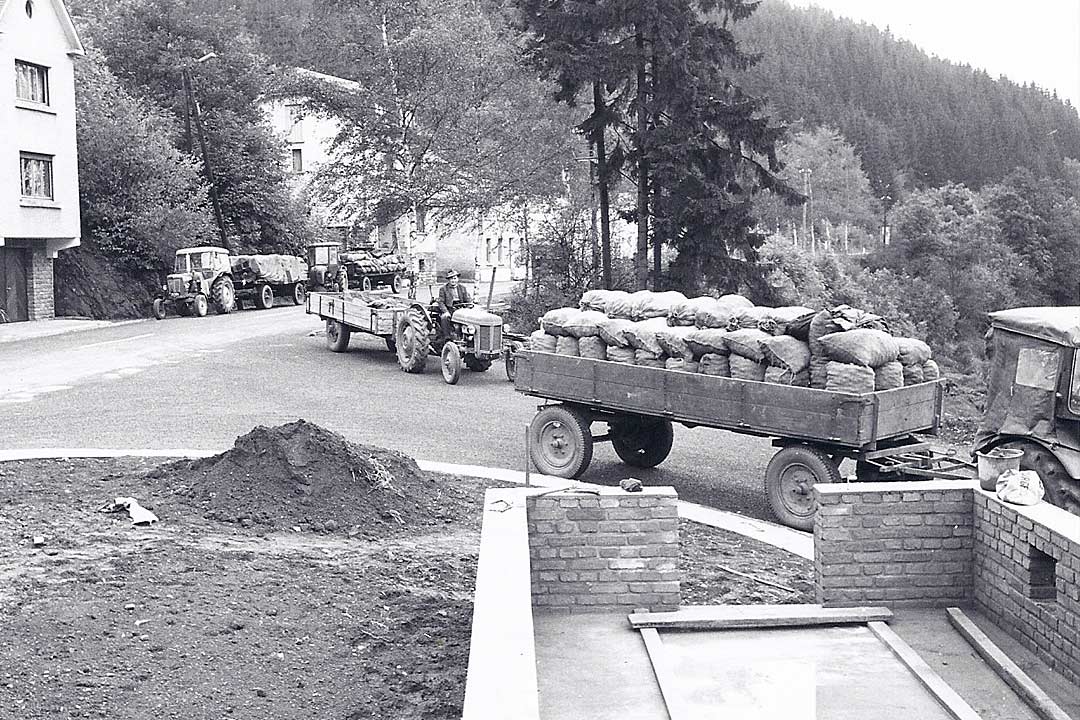
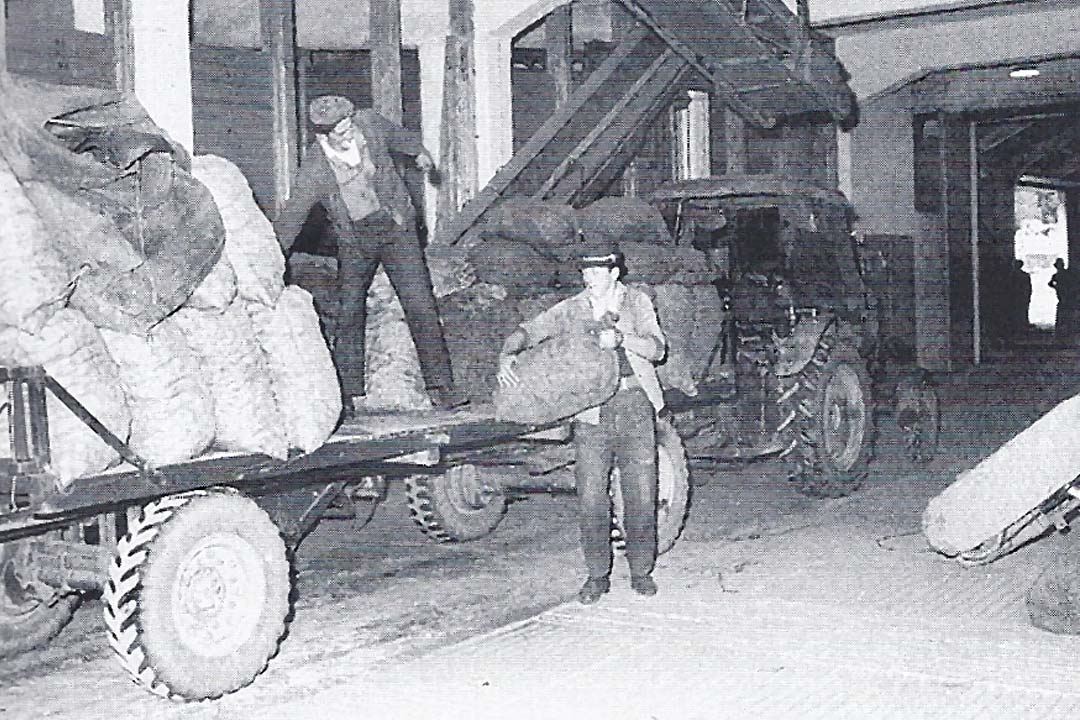
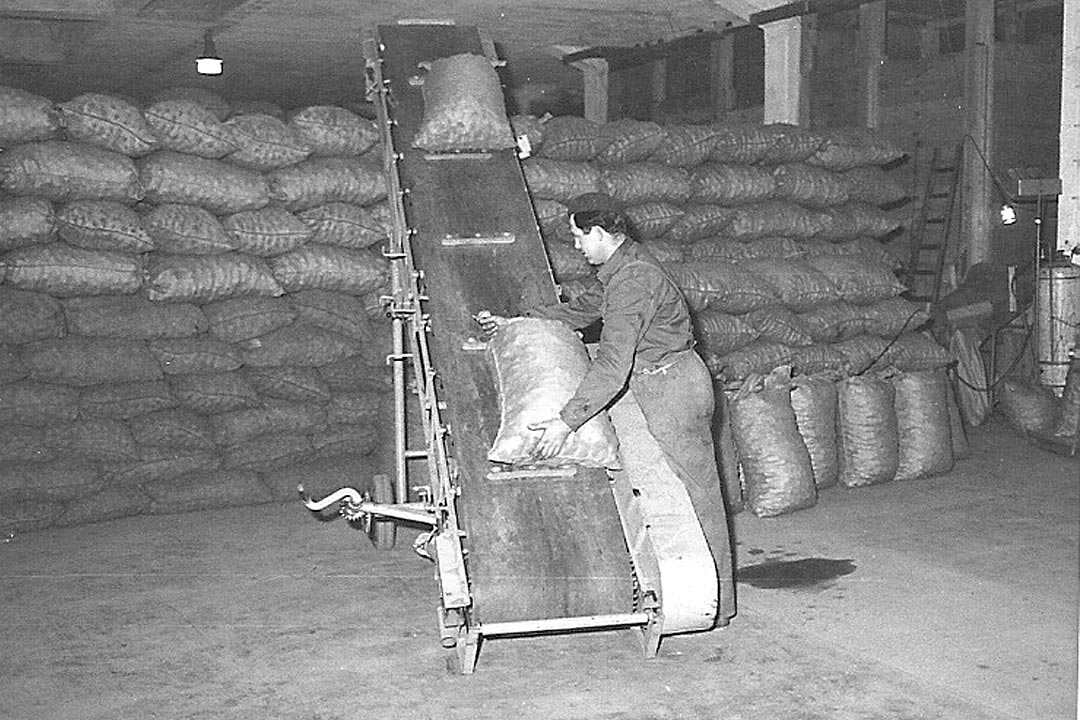
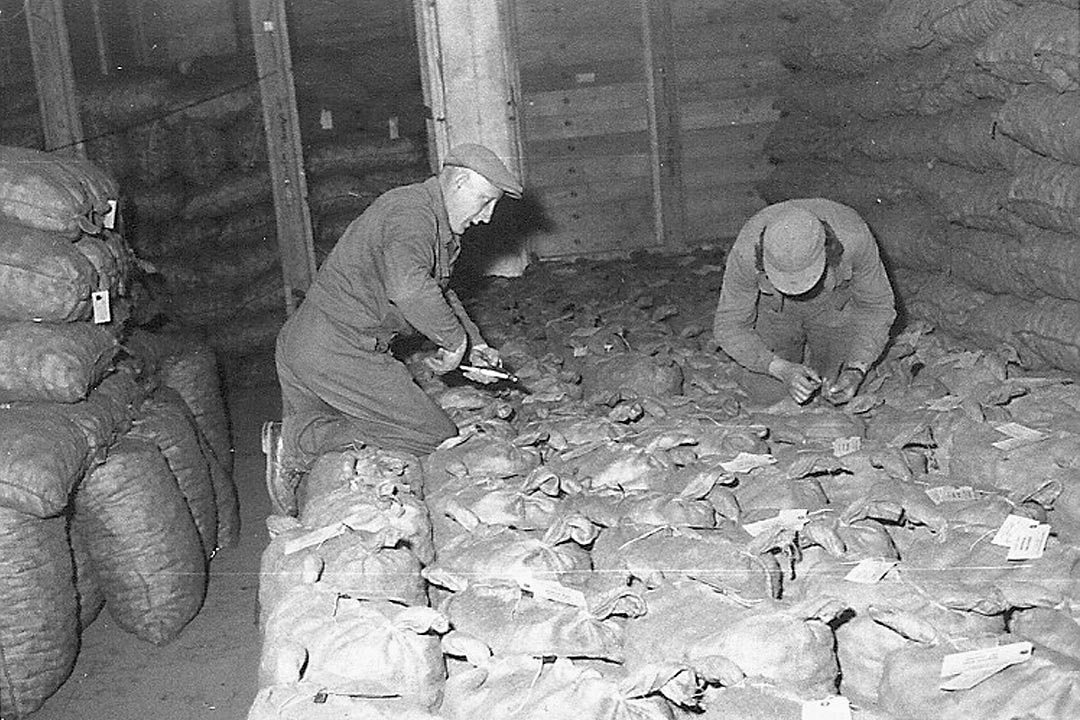
After the Ardennes seed potatoes had already enjoyed great popularity in the period between the world wars in France and Belgium, also due to the favorable growing conditions, the E'slecker Setzgrompergenossenschaft was officially founded on October 2nd, 1945. The term "Syndicat des Producteurs de Plants de Pommes de Terre" is also known by the short form "SYNPLANTS".
According to their statues, the purpose of the cooperative is:
- to encourage the production of seed potatoes of good quality.
- to prepare, store, jointly sell or otherwise use the potatoes produced.
In 1955, the first warehouse with offices for the administration was built in Clervaux. Larger new buildings were constructed in 1962, 1970, 1979 and 1989. The preparation of seed potatoes took place on the farm until 1963. It was not until 1963 that the entire production was stored and sorted in the warehouses located in Clervaux.
In 1990, a second site was built in Eselborn with a storage capacity of 2,500 tons (box storage). This warehouse was expanded by 5,000 tons of capacity in 1997. At the second site in Eselborn, new construction began in 2015. Within two years, a new administration building and a new modernized warehouse were built. In the middle of 2017, the new buildings were completed and SYNPLANTS was able to move completely from Clervaux to Eselborn. Since then, there is this one site with an administration building and two warehouses that can store 16,000 tons of seed potatoes.






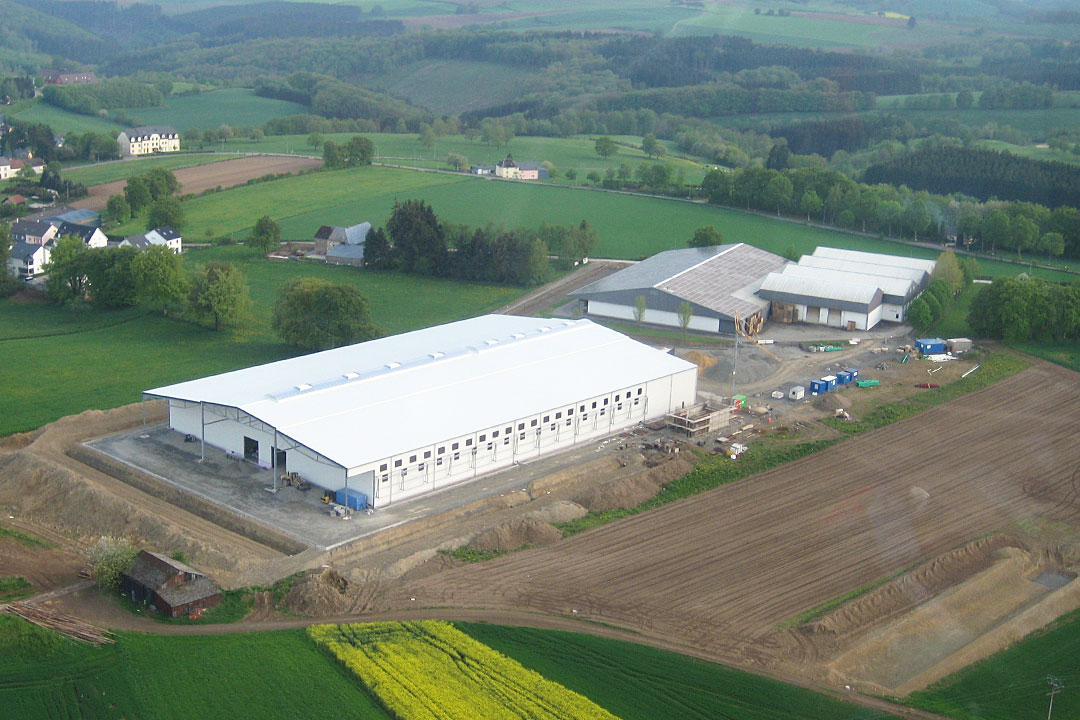
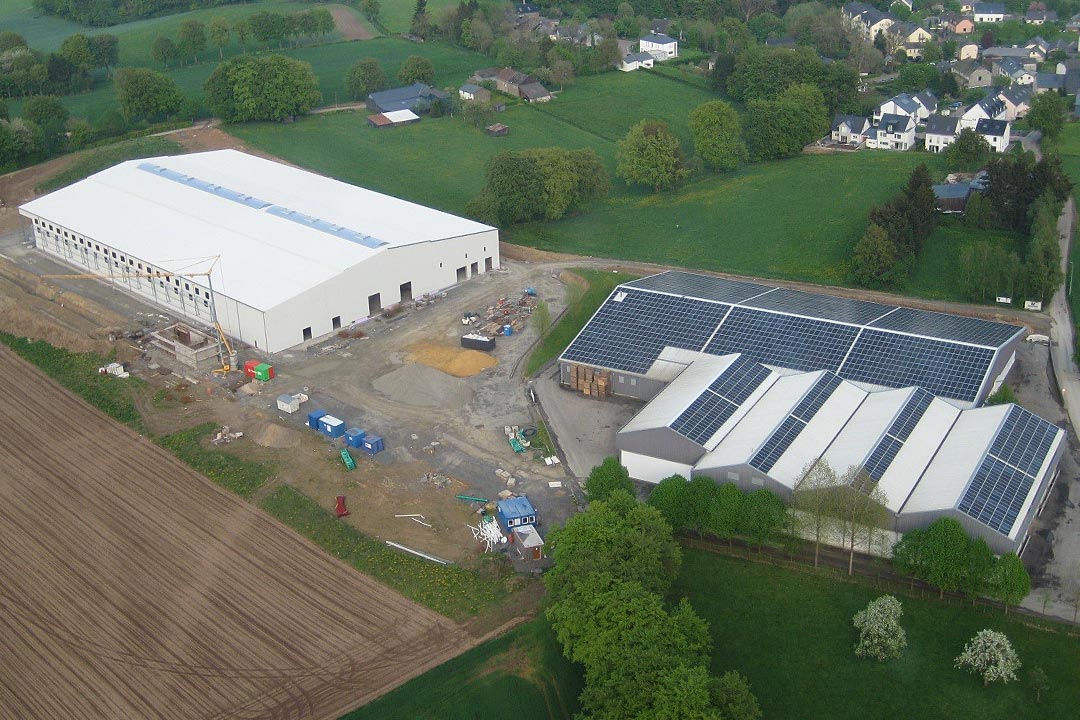
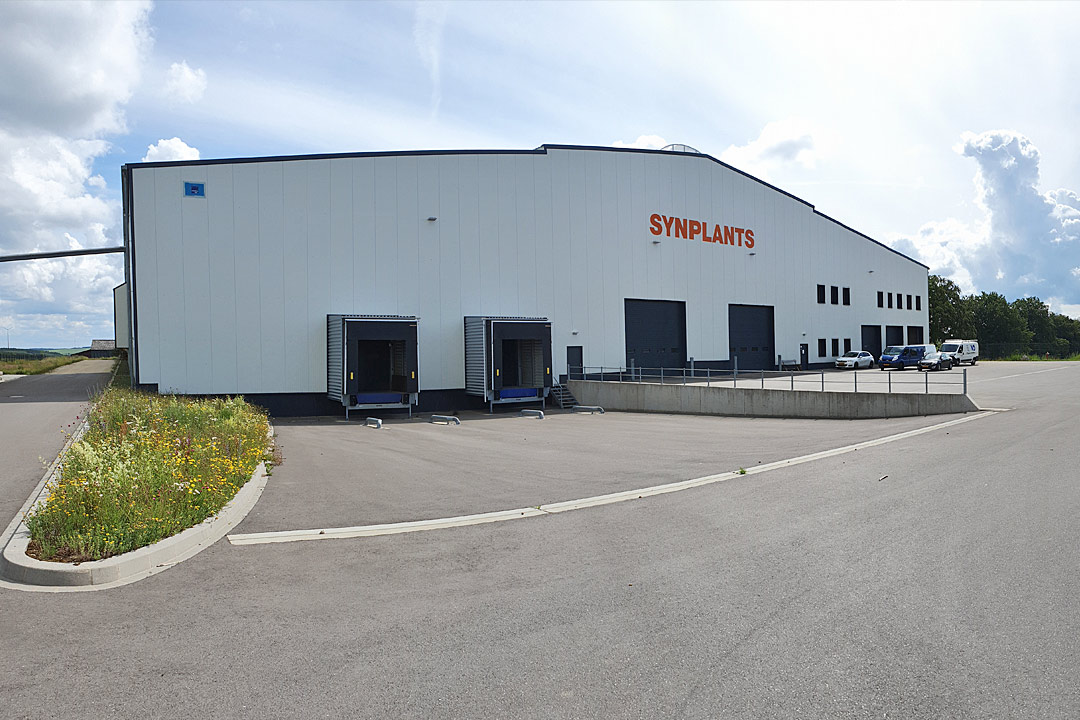
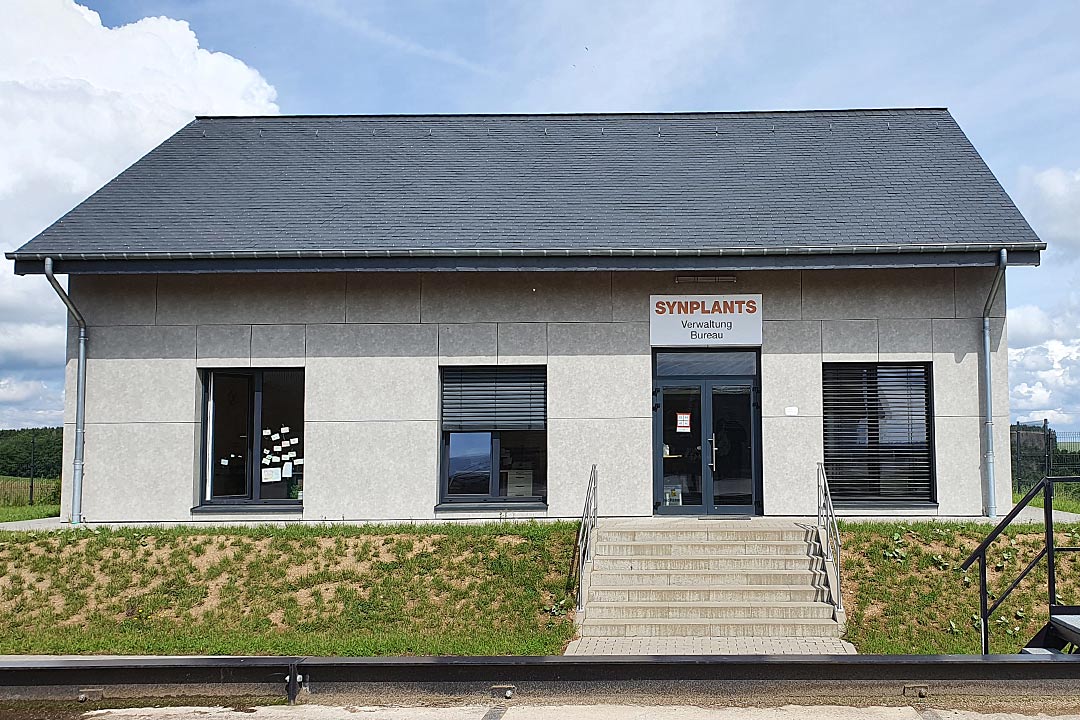
The commissioning of the new seed potato warehouse in Eselborn marks the beginning of a new era for the E'selecker Setzgromperegenossenschaft. A new, state-of-the-art potato warehouse has been built in Eselborn on an area of approximately 8,000 m2. The Storage begins with 2 modern reception points. Storage in large crates simplifies internal logistics and improves storage conditions for the potatoes. For example, it is much easier to store potatoes of lower quality (e.g. from the headland) separately than in pile storage, where all potatoes from one field are stored together. Receiving goods by means of receiving hoppers enables a higher storage capacity per hour and this with low product damage. At the same time, this means a reduction in bacterial and fungal infections and thus an improvement in potato quality.
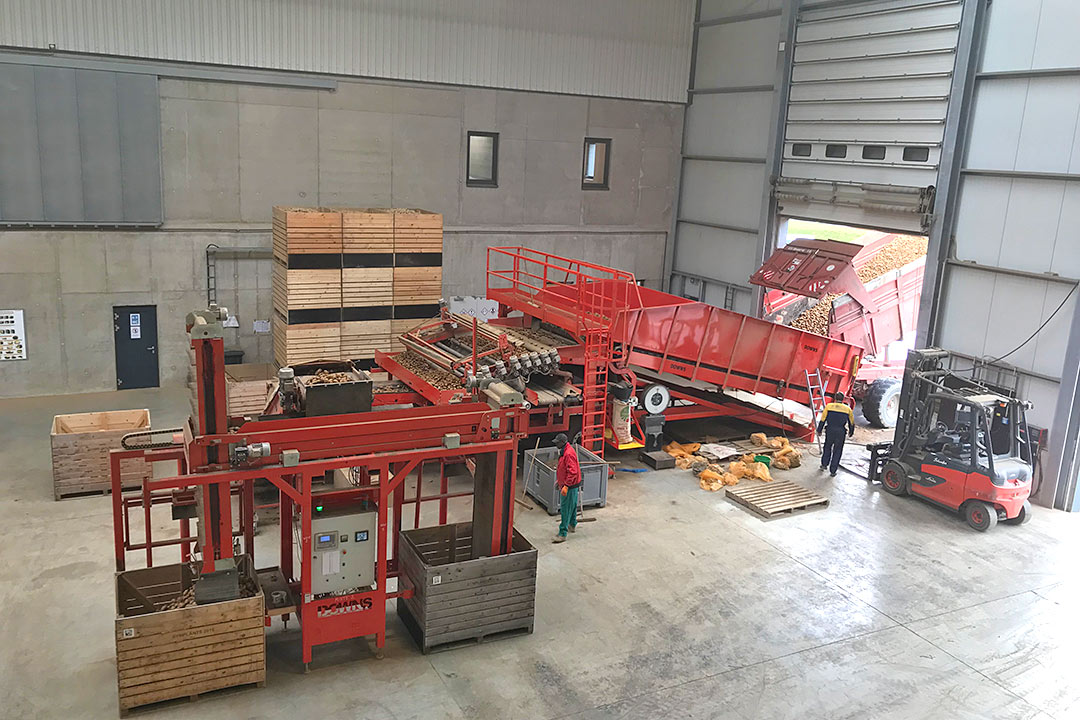
The main part of the new warehouse is occupied by cold storage cells. These allow optimal storage of the harvest from the end of August and this until the sale which runs from November to April, depending on weather conditions even until May. The potatoes are stored in 10 cold storage cells with a total storage capacity of 9,500 tons. The ventilation system is computer controlled and uses the cool outside air at night or, in difficult conditions, refrigeration units. Ventilation is provided using pressurized ventilation. The new ventilation technology and the larger boxes required for this increase the storage capacity per m2 by approx. 25%. The aim is to reduce the previous storage losses from approx. 10% to around 4% losses (mainly water) through the improved ventilation.
In the center of the hall there is a state-of-the-art potato processing plant. The optical sorting system, developed by the VISAR company, works with the help of a mirror system and a very strong all-round illumination by means of LED lights. With the integrated infrared cameras, a tuber can thus be subjected to a 360° analysis within a few seconds, the smallest external defects become visible and size sorting to the mm becomes possible. Compressed air then transports the potatoes in the right direction.
This system significantly improves the sorting result, as it incorporates the natural variation of a plot into the classification process and only one step is required for sorting and calibration. In addition, the optical sorting system can be easily adjusted according to the customer's requirements, regarding the sorting out of unsuitable potatoes. With manual sorting, even with years of experience, it is practically impossible to precisely meet the different requirements depending on the customer and the country of destination. Moreover, with relatively monotonous work, fatigue sets in at some point, which can lead to sorting errors.
In addition to the processing plant, the packaging machines are also located in the middle of the hall. In close cooperation, the two Dutch companies MANTER and VERBRUGGEN have built a semi-automatic filling line and a palletizer.
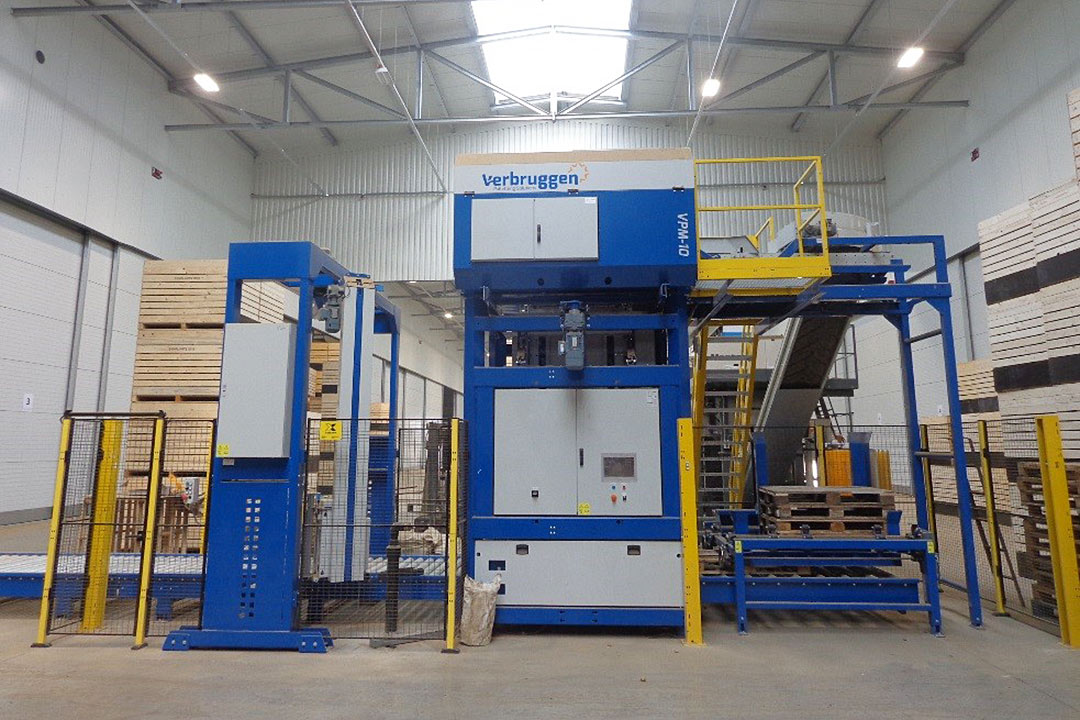
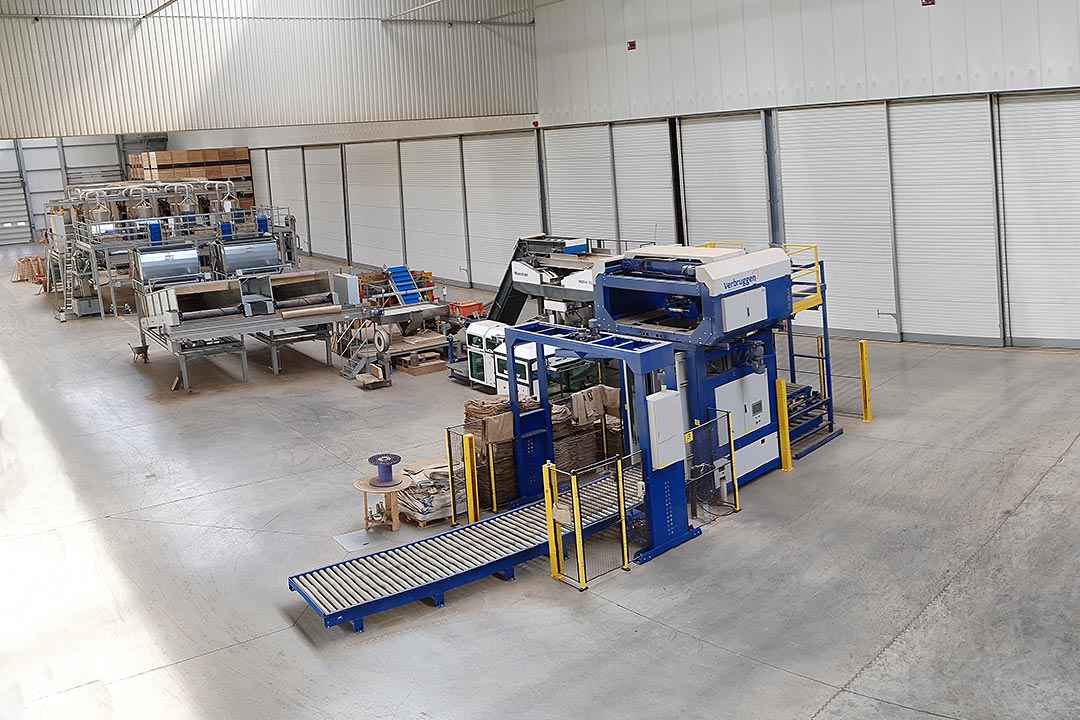
In the new hall, a room for shipping goods was also created. Here, the finished orders are kept at optimal constant temperatures until they are shipped. Loading ramps enable fast and safe loading of trucks. In addition, trucks requiring frost-proof packaging can be loaded inside the hall in a frost-free environment.